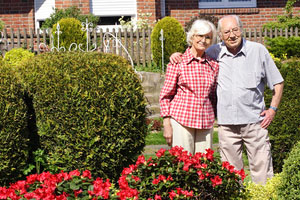



Your knowledge of dementia so far will help you understand the unique experiences that people with dementia will often face with regards to their physical and social environments. This section will help you develop your knowledge and point you towards some key resources and further reading.
As you will see in this section, the concept of a 'supportive environment' has many applications, many of which will be relevant to you if your role involves supporting people with dementia, their families and carers in the following activities:
This section should make you think about all types of environment which may be considered as 'supportive'. You will be made aware of dementia-friendly design. An example of this sort of design is when workers in a day care service use clear signage to help people using services to find their way and orientate themselves to their surroundings. Workers may also pay due care and attention to decor which counteracts the perceptual difficulties that a person with dementia may experience. Alzheimer Scotland resource centres often provide a day-care service and are some of the best examples of supportive environments for people living with dementia in Scotland.
Dementia friendly communities can also be considered as 'supportive environments' and in recent times there have been a great number of local initiatives, such as the project undertaken in Motherwell's town centre by North Lanarkshire Partnership.
Assistive and innovative technologies can be very enabling for people living with dementia, and can be key in helping someone to live independently in the community. It is because of these contributions that these technologies are included under the umbrella of 'Supportive Environments'. Use the key resources and further reading sections to find out more about the range of available assistive and innovative technologies which are making a difference to people's lives.
Most importantly, a supportive environment can play a key role in helping people with dementia, their families and carers reach the best level of wellbeing possible. (have another look at the Health and wellbeing learning outcomes here).
When you have worked through this section of the resource you will be able to: